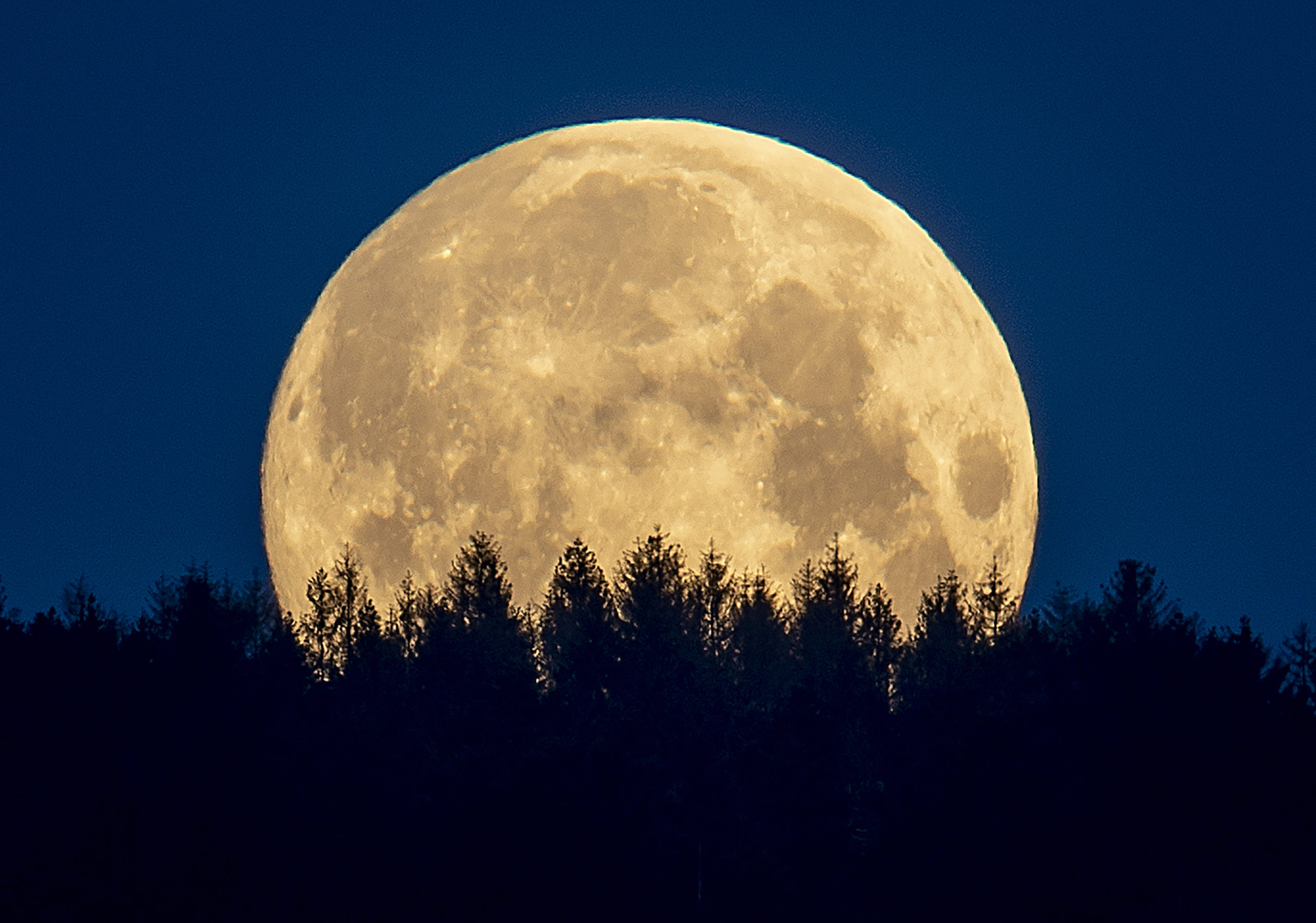" alt="Tine glass beads suggest the moon had volcanoes" class="wp-image-99200" style="width:1200px" data-lazy-srcset="https://technology.inquirer.net/files/2020/05/AP20128208825274-scaled.jpg 2560w, https://technology.inquirer.net/files/2020/05/AP20...

 FILE PHOTO: The full moon sets behind trees in the Taunus region near Frankfurt, Germany, Thursday, May 7, 2020. (Associated Press Photo/Michael Probst)
FILE PHOTO: The full moon sets behind trees in the Taunus region near Frankfurt, Germany, Thursday, May 7, 2020. (Associated Press Photo/Michael Probst)
NEW YORK — Volcanoes were still erupting on the moon when dinosaurs roamed Earth, a new research suggests.
The evidence: three tiny glass beads plucked from the surface of the moon and brought to Earth in 2020 by a Chinese spacecraft. Their chemical makeup indicates that there were active lunar volcanoes until about 120 million years ago, much more recent than scientists thought.
An earlier analysis of the rock samples from the Chang’e 5 mission had suggested volcanoes petered out 2 billion years ago. Previous estimates stretched back to 4 billion years ago.
Article continues after this advertisementThe research was published Thursday in the journal Science.
FEATURED STORIES TECHNOLOGY vivo launches V40 Lite with 5000mAh battery covered by 50-month warranty, starts at Php 13,999 TECHNOLOGY Galaxy Buds3 Pro: Delivering tailored sound wherever you go TECHNOLOGY Very mindful, very intuitive: ASUS’ most superior AI PC yet, the Zenbook S 14, empowers you to achieve more“It was a little bit unexpected,” said Julie Stopar, a senior staff scientist with the Lunar and Planetary Institute who was not involved with the research.
READ: US achieves first moon landing since last Apollo lunar mission
Article continues after this advertisementImages from NASA’s Lunar Reconnaissance Orbiter in 2014 had also suggested more recent volcanic activity. The glass beads are the first physical evidence, Stopar said, although more research is needed to confirm their origin.
Article continues after this advertisementThe Chang’e 5 samples were the first moon rocks brought to Earth since those collected by NASA’s Apollo astronauts and by Soviet Union spacecraft in the 1970s. In June, China returned samples from the far side of the moon.
Article continues after this advertisementThe research may help us understand how long small planets and moons — including our own — can stay volcanically active, study co-author He Yuyang from the Chinese Academy of Sciences said in an email.
READ: Explainer: Why are space agencies racing to the moon’s south pole?
Article continues after this advertisementResearchers studied around 3,000 lunar glass beads smaller than a pinhead and found three with signs they came from a volcano. Glass beads can form on the moon when molten droplets cool after a volcanic eruption or meteorite impact.
Existing time lines suggest the moon had already cooled off past the point of volcanic activity by the time frame suggested by the new research, Stopar noted.
Subscribe to our daily newsletter
“It should inspire lots of other studies to try to understand how this could happenquickwin,” she said.
TOPICS: Moon, volcanoes READ NEXT TECNO Philippines unveils SPARK GO 1 starting at Php 3,499 Bad weather hides asteroid from view EDITORS' PICK LIVE UPDATES: Tropical Storm Kristine WPS: US missile deployment to PH key for combat readiness – US general Central Visayas’ most wanted killed in shootout in Argao, Cebu UPDATES: 2025 elections precampaign stories DILG identifies 38 hotspots ahead of 2025 polls SC issues TRO vs Comelec resolution on dismissed public officials MOST READ SC issues TRO vs Comelec resolution on dismissed public officials Tropical Storm Kristine slightly intensifies; Signal No. 2 in 5 areas Walang Pasok: Class suspensions on Wednesday, Oct. 23 LIVE UPDATES: Tropical Storm Kristine View comments